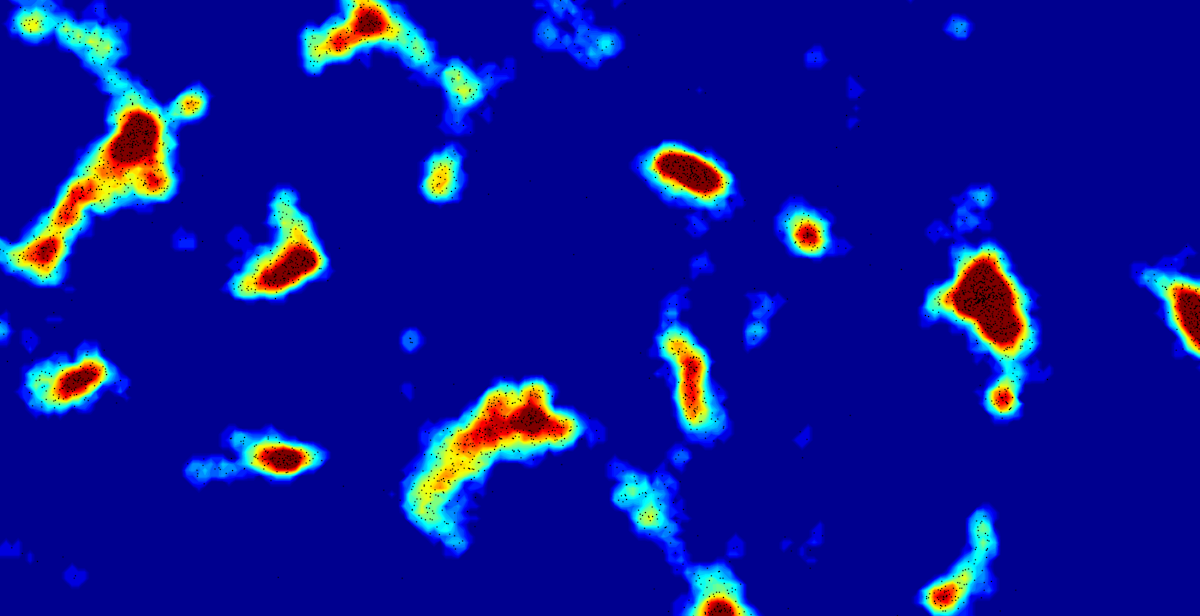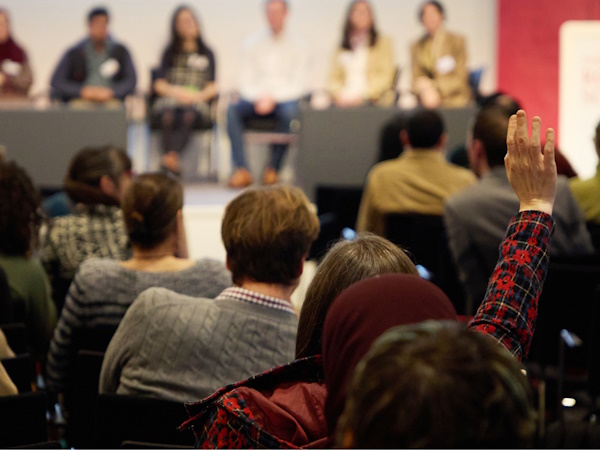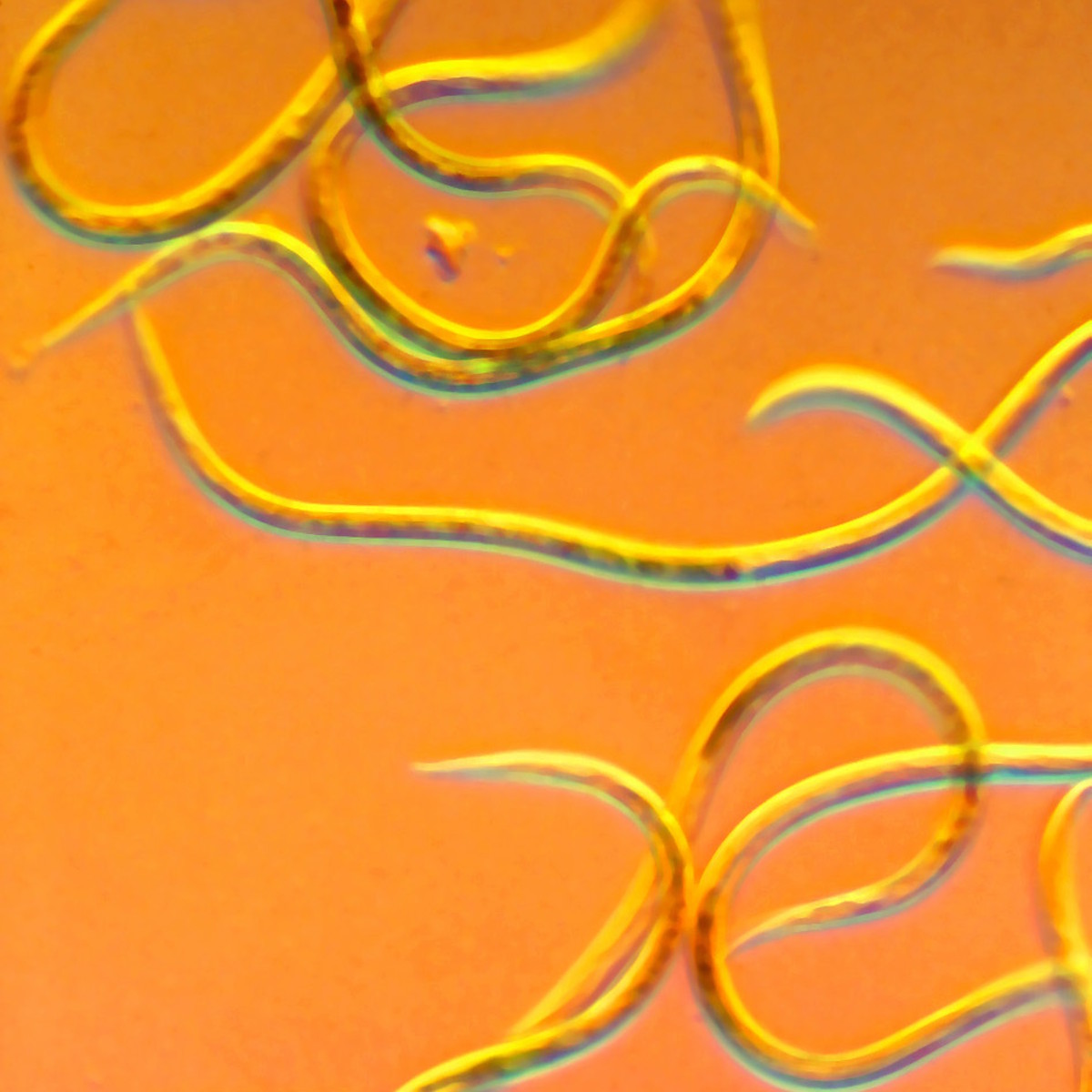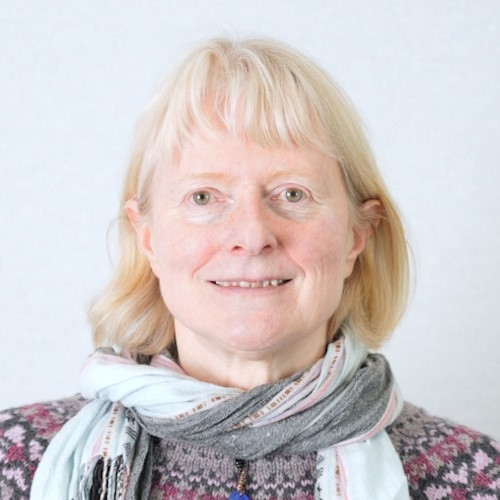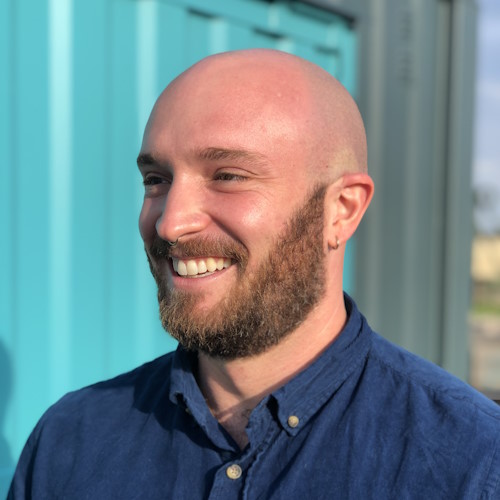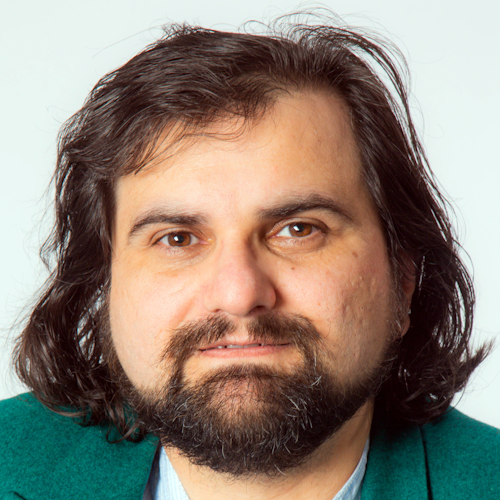Quantum computing in materials and molecular sciences

Discussion meeting organised by Professor Vivien Kendon, Dr John Buckeridge, Dr Bruno Camino, Dr Alin Elena, and Sir Richard Catlow FRS.
This meeting brings together representatives of the industrial and academic communities active in the world of quantum computing and computational researchers in material science, chemistry and life sciences to discuss the current state of the art and its limitations, explore what quantum computing can contribute now and in the near future and discover new opportunities to drive the field forward.
Programme
The programme, including speaker biographies and abstracts, will be available soon. Please note the programme may be subject to change.
Poster session
There will be a poster session from 5pm on Monday 6 October 2025. If you would like to present a poster, please submit your proposed title, abstract (up to 200 words), author list, and the name of the proposed presenter and institution no later than Monday 15 September 2025.
Attending the event
The event is intended for researchers in relevant fields.
- Free to attend
- Both virtual and in-person attendance is available. Advance registration is essential. Please follow the link to register
- Lunch is available on both days of the meeting for an optional £25 per day. There are plenty of places to eat nearby if you would prefer to purchase food offsite. Participants are welcome to bring their own lunch to the meeting
Enquiries: Scientific Programmes team.
Organisers
Schedule
Chair
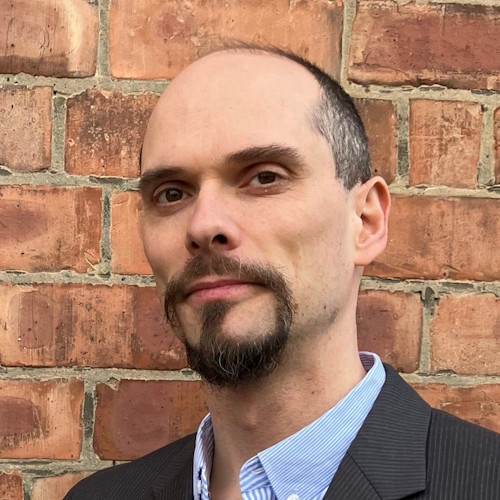
Professor Julien Michel
University of Edinburgh, UK

Professor Julien Michel
University of Edinburgh, UK
Julien Michel is Professor of Biomolecular Simulation and member of the Quantum Software Lab at the University of Edinburgh, and founder of OpenBioSim Community Interest Company. Julien has over 20 years of experience in academic research in biomolecular simulation methodologies and their application to structure-based drug design problems. He is a member of the management group of the academic consortia CCPBioSim and HECBioSim. He has a long-standing track record of collaborative research with the pharmaceutical industry and is a co-recipient of the 2020 RSC Capps Green Zomaya award for his work in Computational Medicinal Chemistry.
| 09:00-09:05 |
Welcome by the Royal Society and organiser
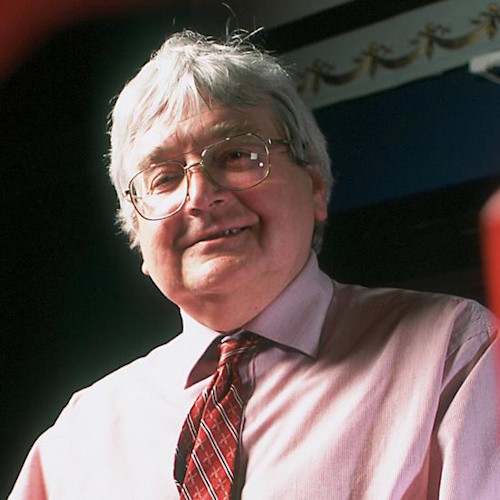
Sir Richard Catlow FRSUniversity College London, UK 
Sir Richard Catlow FRSUniversity College London, UK Richard began his career at Oxford University and has directed the Davy-Faraday Laboratory at the Royal Institute in London. He has been a Professor at University College London, University of Keele, the University of Cardiff, and is a Fellow of the Royal Society - the UK Academy of Science - and a member of the German National Science Academy, the Leopoldina, of the Academia Europaea and the World Academy of Sciences (TWAS); he is also an Honorary Fellow of the Royal Academy of Chemistry and of the Materials and Chemical Societies of India. He served as Foreign Secretary of the Royal Society from 2016 – 2021 and was knighted in 2000 for his services to leadership in science and research. His research programme is based on the development and application of computational techniques used in direct conjunction with experiment in probing the properties of complex materials. He has played a leading role in developing the field both in the UK and internationally. His programme comprises the study of energy materials, catalysis, nano-chemistry and surface chemistry. His work has also exploited the synergy between computation and experiment using synchroton radiation and neutron scattering methods, especially in catalytic science. He has published over 1,200 research papers. |
|---|---|
| 09:05-09:30 |
Computing response properties of materials: bottlenecks and challenges
Condensed matter theory makes a junction between the N-body problem, materials science and new questions raised by ever improving experiments. In particular, the response of matter excited by radiation such as light is often dominated by many-body effects, implying that the response of all electrons or nuclei cannot be understood as the sum of individual responses, not even qualitatively. The quantum nature of electrons constitutes an additional difficulty and source of surprises. Different strategies exist to deal with this problem at least approximately. These range from clever reformulations, for example in terms of functionals, to the use of model systems that can be studied over wide parameter ranges, and progress is based on advances of theory, algorithms, and new computational paradigms. In this talk, Dr Reining will explore some current challenges in excited states and spectroscopy of materials that push today’s approaches to their limits, and will open a discussion about bottlenecks in the various strategies that quantum computing could potentially overcome. 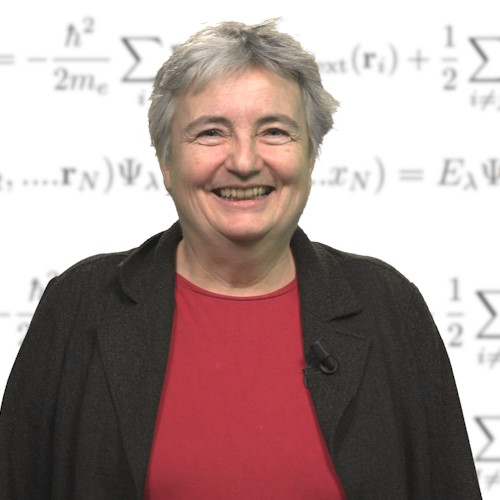
Dr Lucia ReiningFrench National Centre for Scientific Research (CNRS), France 
Dr Lucia ReiningFrench National Centre for Scientific Research (CNRS), France Lucia Reining is CNRS senior scientist at École Polytechnique, France. She studies condensed matter theory to understand and predict the response of matter excited by radiation such as light. This response is often dominated by “N-body” effects, implying that the response of all electrons is not the sum of individual responses. She has been one of the pioneers in including the electron-hole interaction in optical spectra calculations, going beyond existing semi-empirical approaches. In an ongoing dialogue between theory and experiment, she has proposed innovative, unified approaches to the N-body problem, while transforming these abstract formalisms into concrete tools for calculating the properties of everyday materials. Of German origin, she obtained her PhD in Rome, before moving to the Centre Européen de Calcul Atomique et Moléculaire in the Paris region and then joining the CNRS. She is a founding member of the European Theoretical Spectroscopy Facility. She promotes an open, international and collaborative environment and diversity in research. |
| 09:30-09:45 |
Discussion
|
| 09:45-10:15 |
Quantum computing for biomolecular simulation - future possibilities
Biomolecular simulations are characterised by their enormous computational expense. They aim to provide dynamic information from the statis structures obtained experimentally, for example from X-ray crystallography, or cryo-electron microscopy, using physics-based models. Both quantum chemical calculations and classical molecular mechanics are required to understand biomolecular function, depending on the problem to be addressed. Quantum chemical calculations are needed to understand processes such as enzyme catalysis where covalent bonds are broken and reformed. Classical molecular dynamics (MD) simulations are used to explore protein and nucleic acid conformational ensembles where the covalent chemical structure remains fixed. Even with the most powerful supercomputer available (the Anton supercomputer), classical MD simulations of biomolecules are limited to milliseconds for individual protein structures containing around 1 million atoms. A simulation of a whole cell over timescales sufficient to observe cell division in atomistic detail would be computationally intractable. These challenges raise the question of whether simulations that are currently impossible might become feasible on a quantum computer. Certainly, the ability to simulate quantum chemistry processes more efficiently could be a major breakthrough. Moreover, a quantum fast Fourier transform could also massively speed up the calculation of electrostatic interactions in biomolecules, which is a major bottleneck. Less established ideas include quantum evolution of conformational ensembles to determine free energies, and the use of quantum noise to improve sampling. The major challenge to the development of quantum algorithms is the enormous gap in language and expertise between the researchers developing quantum computation and the experts in the areas that quantum algorithms aim to address. Without this mutual understanding it is unlikely that quantum algorithms will be applicable to real problems. 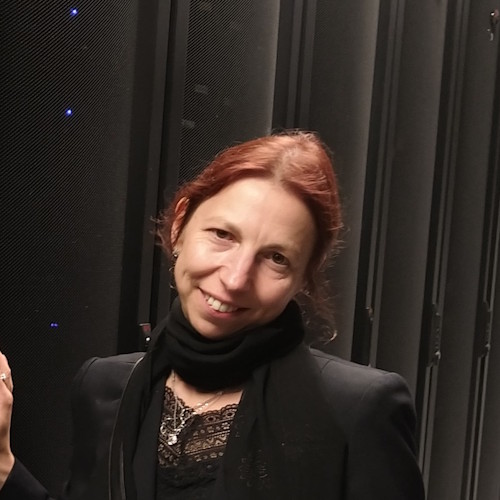
Professor Sarah HarrisUniversity of Sheffield, UK 
Professor Sarah HarrisUniversity of Sheffield, UK Sarah Anne Harris (SAH) is a computational biophysicist and Chair of Biological and Materials Physics in the School of Mathematical and Physical Sciences in Sheffield. Her research uses high performance computer simulations to provide physical insight into biological mechanisms from the atomistic up to the cellular level. She has developed new theoretical physics tool to understand molecular biology at the mesoscale (https://ffea.bitbucket.io/), with a focus on modelling molecular motors such as dynein and myosin. Sarah is a strong advocate for the use of computation in the biological sciences, and is the current Chair of the Collaborative Computational Project in Biomolecular simulation (CCPBioSim) which supports UK researchers using simulations to understand biomolecular interactions and processes. CCPBioSim provides both beginners and experts workshops, and meetings identifying new cutting edge topics (https://www.ccpbiosim.ac.uk/). |
| 10:15-10:30 |
Discussion
|
| 10:30-11:00 |
Break
|
| 11:00-11:30 |
Bridging scales: multi-scale modelling for next-generation materials innovation
The materials discovery landscape is undergoing a profound transformation driven by advances in multi-scale modelling approaches that connect atomic-level phenomena to real-world performance. This presentation examines the challenges and opportunities in integrating computational methods across different length and time scales to accelerate materials innovation. We highlight how modern computational approaches are evolving beyond isolated simulations to provide comprehensive frameworks that capture the complexity of real-world materials behaviour, from electronic structure to macroscopic properties. The presentation discusses how artificial intelligence and quantum computing can be strategically integrated with classical methods to overcome current computational bottlenecks and enhance predictive capabilities. Through detailed case studies in three high-impact domains—carbon capture technologies, pharmaceutical development, and corrosion-resistant materials—we demonstrate how multi-scale modelling approaches are solving previously intractable challenges and opening new pathways for innovation. As quantum computing technology matures, we emphasise the critical importance of developing robust integration infrastructure and middleware solutions that effectively connect quantum capabilities with established classical systems to deliver practical business value. This presentation argues that the future of materials discovery depends not on revolutionary advances in any single computational technique, but on our ability to seamlessly integrate complementary approaches across multiple scales, ultimately transforming how we discover, optimise, and deploy advanced materials for society's most pressing challenges. 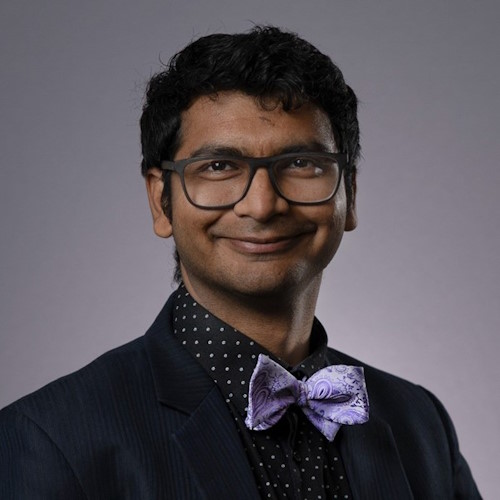
Dr Phalgun LolurCapgemini Quantum Lab, UK 
Dr Phalgun LolurCapgemini Quantum Lab, UK Phalgun Lolur serves as the Scientific Quantum Development Lead at Capgemini Engineering, where he spearheads technical development initiatives at the intersection of quantum chemistry, materials science, data-driven methods, and quantum computing. Endorsed by the Royal Society for his expertise in theoretical and computational chemistry, quantum chemistry and computing, Dr Lolur brings over 15 years of experience in quantum simulations, optimisation, and machine learning applications. In his role, Dr Lolur leads multidisciplinary teams across geographies to develop innovative solutions for complex challenges in the life sciences, consumer products, chemicals, and energy sectors. He is particularly focused on integrating quantum computing capabilities with existing classical methodologies to create comprehensive multi-scale modelling frameworks that bridge the gap between atomic-level simulations and real-world applications. He is passionate about developing practical quantum computing applications that deliver tangible value by addressing some of the most challenging problems in chemistry and materials science. His expertise in translating cutting-edge quantum technologies into practical solutions positions him at the forefront of efforts to harness quantum computing's potential for accelerating materials innovation and scientific discovery. |
| 11:30-11:45 |
Discussion
|
| 11:45-12:15 |
SIESTA-QCOMP: a hybrid-classical approach for electronic structure calculations
Density Functional Theory (DFT) struggles with electronic structure problems involving strongly-correlated electrons, a domain where quantum computing holds a significant long-term advantage. To address this, the SIESTA-QCOMP project is developing a software package to embed quantum computing methodologies within classical DFT calculations performed with SIESTA. This hybrid approach aims to overcome the limitations of DFT for large-scale simulations of molecules and periodic systems containing strongly-correlated electrons. SIESTA-QCOMP features a modular architecture with a driver program controlling the communication between the classical SIESTA code and quantum modules, primarily built on Qiskit. The current implementation utilises a VQE-based projection-embedding technique, with plans to incorporate SQD-based methods to extend the reach towards the quantum utility regime. Key challenges being addressed include adapting the classical code for a hybrid workflow, defining reliable embedding schemes, ensuring robust communication, and merging the quantum and classical results into a cohesive solution. In the near future, the project will demonstrate this powerful approach by simulating an iron porphyrin molecule within a haemoglobin environment. This work not only provides a powerful new too for the SIESTA community but also establishes the foundation for a broader, long-term initiative, QCOMP4DFT, focused on ensuring interoperability between various DFT codes and quantum computing platforms. 
Dr Yann PouillonCIC nanoGUNE, Spain 
Dr Yann PouillonCIC nanoGUNE, Spain After a French master's degree in Engineering from the École Nationale Supérieure de Physique de Strasbourg, France, and a PhD in Condensed Matter Physics from the University of Strasbourg, Yann has successively worked in Italy (2002 - 2003), Belgium (2003 - 2006), and Spain (2006 - present). He has been involved in multidisciplinary projects ranging from cutting-edge physics theory development to gas-sensor modelling and virtual reality visualisation of molecules, in close contact with experimentalists on many occasions, eg for the development of mechanically interlocked carbon nanotubes. More recently, Yann was lead software engineer and innovation architect at the Simune Atomistics startup, in San Sebastián, Spain, before joining its mother institution, CIC nanoGUNE, to have existing classical software packages leverage the upcoming Basque quantum computer. With over 25 years of experience in scientific software development and 15 years of agile practices, Yann has helped various researchers and groups bring their software to higher quality standards and organise collaborative efforts for codes like ABINIT and SIESTA. He coordinated the software activities of the European Theoretical Spectroscopy Facility (ETSF) from 2008 to 2014, and was involved in designing its software repository and continuous integration infrastructure. He has maintained the nanoscale-physics metapackage in the Debian GNU/Linux distribution, co-created several data standards and their implementations, and actively participated in the deployment of libraries like LibXC. He has been one of the core developers of the CECAM Electronic Structure Library since its creation in 2014. |
| 12:15-12:30 |
Discussion
|
Chair
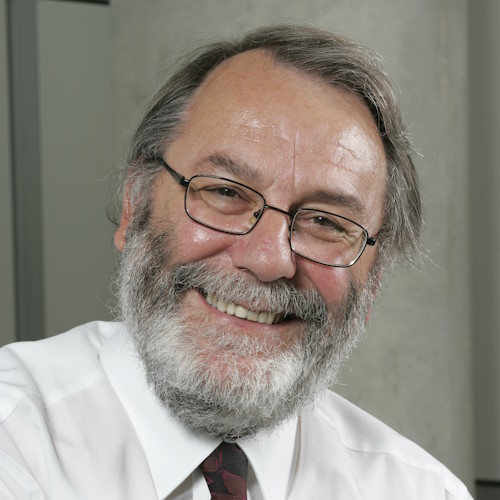
Sir Peter Knight FRS
Imperial College London & National Physical Laboratory, UK

Sir Peter Knight FRS
Imperial College London & National Physical Laboratory, UK
Knight is Chair of the UK National Quantum Technology Programme Strategy Advisory Board and has been involved in the creation of the UK Quantum programme since its inception, including the creation of the UK Quantum Strategy and the commitment of £2.5bn over the next decade to the field. He chairs the Quantum Metrology Institute at the National Physical Laboratory and in Senior Research Investigator at Imperial College where until 2010ne was Deputy Rector (Research). He was knighted in 2005 for his work in optical physics. Knight was the 2004 President of the Optical Society of America and 2011-2013 President of the Institute of Physics. He was until 2010 chair of the UK Defence Scientific Advisory Council and remains a UK Government science advisor. His research centres on quantum optics, nonclassical light and quantum technology. He has won the Thomas Young Medal and the Glazebrook Medal of the Institute of Physics, the Ives Medal and the Walther Medal and Prize of the OSA, the Royal Medal of the Royal Society and the Faraday Prize of the IET. He chairs the Steering Group for UNESCO's International Year of Quantum.
| 13:30-14:00 |
No small matter: atomistic modelling insights into energy materials
Further breakthroughs in materials for energy-related technologies such as lithium batteries and solar cells require advances in new compositions and underpinning materials science. Indeed, a greater fundamental understanding and optimisation of energy materials require nano-scale characterisation of their structural, ion transport and interface behaviour. In this context, atomistic modelling has been a powerful approach for investigating these properties, which have relied on advances in high end supercomputers. This presentation will describe such studies in two principal areas with an outline of what quantum computing can contribute to this field; (i) new high energy density cathode materials for lithium-ion EV batteries; (ii) halide perovskite materials for next-generation solar cells and optoelectronics. 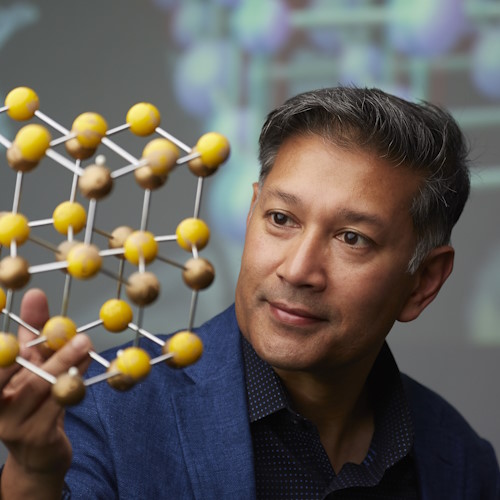
Professor Saiful IslamUniversity of Oxford, UK 
Professor Saiful IslamUniversity of Oxford, UK Saiful is Professor of Materials Science at the University of Oxford. He grew up in Crouch End, north London, and obtained his Chemistry degree and PhD from University College London. He then worked at the Eastman Kodak Labs, New York, and the Universities of Surrey and Bath. His research focuses on understanding atomic-scale processes in new materials for lithium batteries, sodium batteries and perovskite solar cells. Saiful has received several awards including the 2025 RSC Environment Prize, 2022 Royal Society Hughes Medal and 2020 ACS Storch Award in Energy Chemistry. |
|---|---|
| 14:00-14:15 |
Discussion
|
| 14:15-14:45 |
Grid-based methods for chemistry simulations on quantum computer
First-quantized, grid-based methods for chemistry modelling are a natural and elegant fit for quantum computers since they leverage the quantum Fourier transform to efficiently execute time evolution of the quantum state. However, it is infeasible to use today's quantum prototypes to explore the power of this approach because it requires a substantial number of near-perfect qubits. This talk examines the algorithmic choices and quantum resource required for end-to-end computation of electron scattering processes and non-adiabatic molecular photodynamics, covering initial state preparation, accurate time evolution, and the extraction of energies, state populations and spectroscopic signatures. 
Dr David TewUniversity of Oxford, UK 
Dr David TewUniversity of Oxford, UK David Tew is an Associate Professor of Theoretical Chemistry at the University of Oxford, where he develops theoretical methods for understanding chemistry through computer simulation. His focus is on electronic structure methods that are highly accurate and therefore quantitatively predictive, but at the same time scalable to large, complex systems, so that computer simulation can be used to help solve real-world chemical problems. He has authored over 120 papers on quantum chemical methods and applications, and recent work has addressed algorithms for computing electronic energies and photodynamics on quantum computers. He is one of 5 partners overseeing the Turbomole electronic structure program package for the simulation of molecules and materials. Previous positions include Senior Scientists at the Max Planck Institute for Solid State Research and Royal Society URF at the University of Bristol. He is also editor of Chemical Physics Letters. |
| 14:45-15:00 |
Discussion
|
| 15:00-15:30 |
Break
|
| 15:30-16:00 |
Quantum computation and optimisation using neutral atom arrays
Neutral atoms have emerged as a powerful and scalable platform for quantum computing, offering the ability to generate large numbers of identical and high quality qubits in reconfigurable arrays. By coupling atom to highly excited Rydberg states with strong, long-range dipole-dipole interactions it is possible to perform high-fidelity two and multi-qubit gate operations, or to natively implement classical graph optimisation problems, highlighting the versatility for performing both analogue and digital quantum computing. In this talk we will present work at Strathclyde focused on developing large-scale system for quantum computing and optimisation, including demonstration of high fidelity single qubit gate operations on up to 225 qubits with errors below the threshold for fault tolerance using a non-destructive readout technique, as well as initial results from performing weighted graph optimisation using programmable local light-shifts across the atomy array. This provides a route to embedding a wider class of problems including quadratic unconstrained binary optimisation (QuBO) and integer factorisation, and extension to native implementations of graph colouring. Alongside progress towards large-scale analogue optimisation, we will present a new cryogenic dual-species setup targeting fault-tolerant digital computation using quantum error-correction. This approach offers suppression of mid-circuit readout errors due to use of atoms of different species, and will provide a versatile test-bed for prototyping and benchmarking performance and scalability of recently proposed quantum low-density parity check codes. 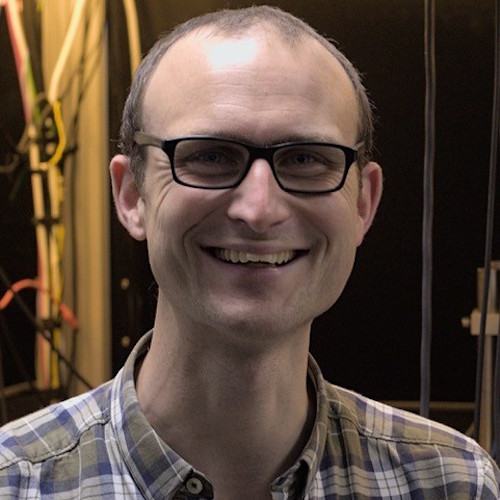
Professor Jonathan PritchardUniversity of Strathclyde, UK 
Professor Jonathan PritchardUniversity of Strathclyde, UK Professor John Pritchard is an RAEng Senior Research Fellow and Head of Experimental Quantum Optics and Photonics Group at Strathclyde who is leading work developing neutral atom quantum computing. Through leadership of SQuAre, an EPSRC Prosperity Partnership with M Squared Lasers, his team have developed the UK's first scalable platform for neutral atom quantum computing, including developing new protocols for high fidelity multi-qubit gates and demonstrating single-qubit gate operations below the threshold fore fault tolerance on arrays of up to 225 qubits. This has enabled first demonstrations of optimisation on weighted graphs, and provides the underpinning technology for Maxwell, a commercial neutral atom platform developed by M Squared Lasers. As part of a new RAEng Fellowship he is now working to explore routes to fault-tolerant quantum computing be developing a cryogenic dual-species platform for implementing quantum error correction. |
| 16:00-16:15 |
Discussion
|
| 16:15-16:45 |
Quantum embedding methods for simulations of materials on quantum computers (online)
We discuss computational frameworks to carry out electronic structure calculations of solids on noisy intermediate scale quantum computers [1,2] using embedding theories [3], and we give examples for a specific class of materials, i.e., spin defects in solids. These are promising systems to build future quantum technologies, e.g., computers, sensors and devices for quantum communications. We also present a hybrid quantum- classical quantum monte carlo algorithm (QC-QMC) scheme [4] applied to both spin-defects in solids and molecules, which removes a pre-existing classical exponential bottleneck in post-processing; we show from experiments on quantum hardware that the QC-QMC algorithm is inherently noise robust. Although quantum simulations on quantum architectures are in their infancy and still face considerable challenges, promising results appear to be within reach. [1] Quantum simulations of Fermionic Hamiltonians with efficient encoding and ansatz schemes, Benchen Huang, Nan Sheng, Marco Govoni, and Giulia Galli, J. Chem. Theory Comput. 19, 1487–1498 (2023). [2] Simulating the electronic structure of spin defects on quantum computers, Benchen Huang, Marco Govoni, and Giulia Galli, PRX Quantum 3, 010339 (2022). [3] Quantum Embedding Theories to Simulate Condensed Systems on Quantum Computers, Christian Vorwerk*, Nan Sheng*, Marco Govoni, Benchen Huang, and Giulia Galli Nat. Comput. Sci. 2, 424 (2022). [4] Evaluating a quantum-classical quantum Monte Carlo algorithm with Matchgate shadows, Benchen Huang, Yi-Ting Chen, Brajesh Gupt, Martin Suchara, Anh Tran, Sam McArdle, and Giulia Galli, Phys. Rev. Research 6, 043063 (2024). 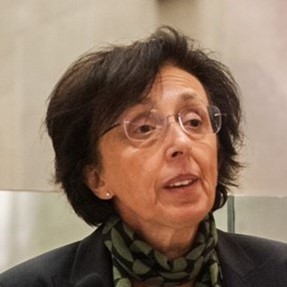
Professor Giulia GalliUniversity of Chicago, USA 
Professor Giulia GalliUniversity of Chicago, USA Giulia Galli is the Liew Family Professor of Electronic Structure and Simulations in the Pritzker School of Molecular Engineering and the Department of Chemistry at the University of Chicago, and a Senior Scientist at Argonne National Laboratory, where she is the director of the Midwest Integrated Center for Computational Materials. She is an expert in the development of theoretical and computational methods for the study of material and molecular properties using quantum simulations. She is a member of the US National Academy of Sciences, the American Academy of Arts and Science, and the International Academy of Quantum Molecular Science, and a Fellow of the American Association for the Advancement of Science and of the American Physical Society. She is the recipients of numerous awards in computational physics, theoretical chemistry, materials science and nanoscience. |
| 16:45-17:00 |
Discussion
|
Chair
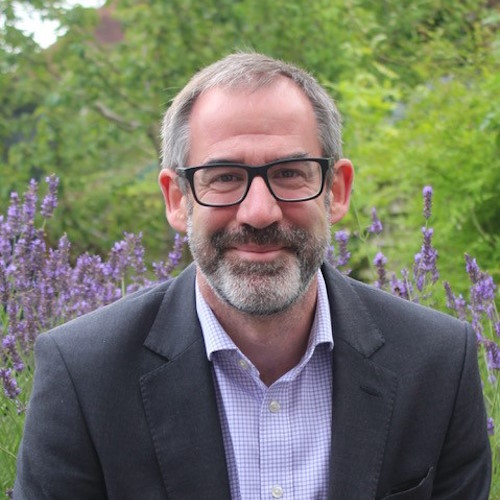
Professor Peter Haynes FREng
Imperial College London, UK

Professor Peter Haynes FREng
Imperial College London, UK
Peter Haynes is Professor of Theory and Simulation of Materials and Director of the Centre for Quantum Engineering, Science and Technology at Imperial. His research interests have mainly focussed on the development on new classical algorithms for performing first-principles quantum-mechanical simulations and their application to materials science, nanotechnology and biological systems. In particular he has developed methods for large-scale simulations where the computational effort scales linearly with system-size. He is an author of the ONETEP code and was awarded the Maxwell Medal and Prize for Computational Physics by the Institute of Physics in 2010. His interests have expanded in recent years to include the exploration methods for simulating molecules and materials on quantum computers and he is a co-investigator on the new QCI3 hub as well as a member of CCP-QC management tea. He was elected to the Fellowship of the Royal Academy of Engineering in 2021.
| 09:00-09:30 |
Quantum computing and materials discovery
Given their importance, it is natural to look for new and improved methodology to discover functional materials. Computational methods can provide valuable guidance to experimental researchers in this task. This presentation will consider how computation can support this endeavour and the opportunities offered by the advent of quantum computing. The accessibility of new materials candidates is influenced strongly by their energies, so assessing the energies of new compositions is a key part of discovery. The energy of a composition is governed by its structure, so energy prediction requires structure prediction. Crystal structure prediction is a famously challenging problem in condensed matter science because of the combinatorics of the possible atomic positions and the need to calculate the interatomic interaction energies with suitable accuracy. Quantum computing potentially offers solutions to both problems. We have shown that under clear assumptions it is possible to predict the structure of a material given only its composition using integer programming. This approach formulates structure prediction as a QUBO problem, allowing us to demonstrate the use of quantum computing for crystal structure prediction (Gusev Nature 619, 68-72, 2023). This allocation of atoms to positions under energy guidance exploits the advantages of quantum computing in dealing with combinatorial problems. We have recently (Clymo Angewandte Chemie International Edition 64, e202417657 2025) shown that constraint satisfaction can be applied to the exploration of composition space via satisfiability modulo theory, opening a new approach to guidance that can be extended to quantum computing. Classical force-field energies are being gradually complemented with data-driven models to assess stability that can be immediately applied across a wide range of chemistries. We have recently introduced statistical proxy potentials (Antypov ChemPhysChem 25, e202400254, 2024), which are driven by experimental structural data and bring advantages for geometry optimisation. We assess their ability to predict structures, which indicates that data-driven guidance can be extended to quantum computing. 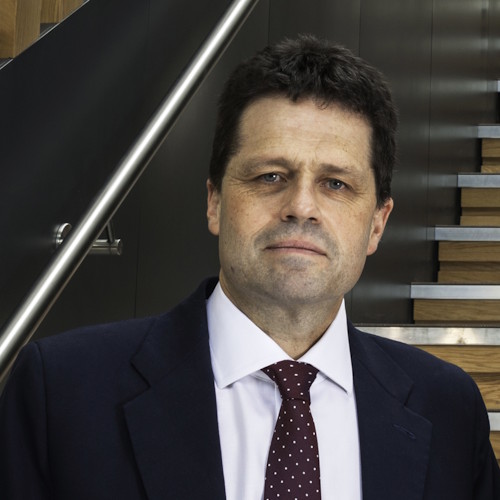
Professor Matthew Rosseinsky OBE FRSUniversity of Liverpool, UK 
Professor Matthew Rosseinsky OBE FRSUniversity of Liverpool, UK Matthew Rosseinsky obtained a DPhil in Chemistry from the University of Oxford in 1990. He was a Postdoctoral Member of Technical Staff at AT&T Bell Laboratories then in 1992 was appointed University Lecturer in Chemistry at Oxford. In 1999 he moved to the University of Liverpool as Professor of Inorganic Chemistry. He was elected a Fellow of the Royal Society in 2008. He was awarded the inaugural de Gennes Prize for Materials Chemistry by the Royal Society of Chemistry in 2009. He became a Royal Society Research Professor in 2013. He was awarded the Hughes Medal of the Royal Society in 2011 and its Davy Medal in 2017. In 2022, he was awarded the Basolo Medal of the American Chemical Society Chicago Section. He received the 2023 Eni Energy Frontiers Award for the digital design and discovery of next-generation energy materials from the President of Italy. He was a member of the governing Council of the Engineering and Physical Sciences Research Council from 2015 - 2019. He was awarded the OBE in 2024 for services to material chemistry research and innovation. In 2025, he was awarded the Royal Medal of the Royal Society. His work focuses on the design and discovery of solid-state materials, which have applications ranging from energy and information storage to catalysis and superconductivity. His group has developed new methods of realising functional materials in the laboratory, based on the integration of experiment with automated and computational methods spanning physical and computer science. His work has been characterised by extensive collaboration with many academic and industrial colleagues. |
|---|---|
| 09:30-09:45 |
Discussion
|
| 09:45-10:15 |
From promise to practice: the challenges in finding quantum computing applications
Quantum computing has long been heralded as a revolutionary force poised to transform numerous industries. Early predictions by consulting firms such as McKinsey and BCG suggested dramatic impacts across pharma, chemistry, materials science and related sectors. In pharmaceuticals specifically, quantum computing was expected to revolutionise drug discovery and enhance molecular simulations, significantly reducing research and development timelines and associated costs. Yet, despite substantial investments, these optimistic forecasts have not yet materialised into tangible industrial benefits. While quantum algorithms such as Quantum Phase Estimation (QPE) theoretically provide ground-breaking computational capabilities - enabling calculations beyond the reach of classical computers - practical industrial applications remain elusive. Accurate quantum calculations alone do not automatically enable faster drug discovery or improved material designs. Industries require quantum computing solutions that deliver clear, substantial, and cost-effective advantages, sufficient to justify significant investment and substantial organisational changes. This challenge is intensified by the continuing improvements and accumulated expertise of classical computational methods and recent advancements in artificial intelligence. Effectively bridging this gap demands sustained collaboration, realistic expectation setting, and integrated end-to-end methodologies capable of delivering genuinely beneficial outcomes. Achieving industrial impact with quantum computing is less a question of theoretical promise and more one of systematically addressing industry-specific needs through targeted, innovative approaches. 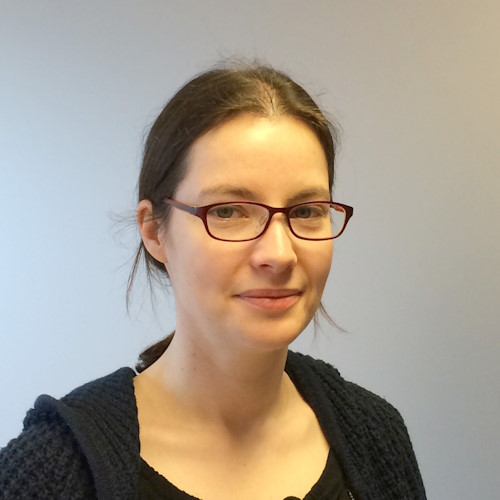
Dr Nicole HolzmannPsiQuantum, Germany 
Dr Nicole HolzmannPsiQuantum, Germany Nicole is a manager in the Quantum Solutions team at PsiQuantum, where she focuses on identifying viable fault-tolerant quantum computing use cases, particularly within the defence sector. In her previous role at Riverlane, she led a team dedicated to evaluating fault-tolerant quantum algorithms, their applications and feasibility. With over 10 years in academia, Nicole has extensive experience in quantum and computational chemistry, having researched topics ranging from electronic properties of small molecules to catalysis mechanisms, membrane proteins, and drug design. |
| 10:15-10:30 |
Discussion
|
| 10:30-11:00 |
Break
|
| 11:00-11:30 |
Molecular property simulations on quantum computers
Molecular simulation has been identified as one of the first practical applications where quantum computers could demonstrate utility, prompting extensive research into quantum algorithms for chemistry. Here, we go beyond ground state energy simulation and present various works related to obtaining ground and excited state molecular properties on quantum computers. These works are inspired by classical quantum chemistry knowledge, formulated in a hybrid quantum/classical algorithm framework that leverages orbital optimisation and active spaces, and go beyond "ideal simulator" studies, investigating shot and device noise. Crucially, we present first proof-of-concept hardware experiments of our algorithms on real quantum devices. We start by presenting our results on quantum linear response (qLR) for excited state properties [arXiv:2312.13937] and dive into some extensions thereof such as a Davidson subspace [arXiv:2402.12186] and reduced density matrix reformulation [arXiv:2404.16586]. Importantly, qLR allows the inclusion of an environment via polarizable embedding [arXiv:2411.03852]. After briefly discussing limitations of qLR [arXiv.2406.17141; arXiv:2506.06063], we show how alternatively absorption spectra can be obtained from a state-average VQE approach. Finally, we present hyperfine coupling constants of various small molecules obtained within unrestricted oo-qubit ADAPT on quantum hardware [arXiv:2503.09214]. Throughout the presentation, our error mitigation work will be highlighted [arXiv:2408.09308] together with insight into running quantum experiments on current devices. 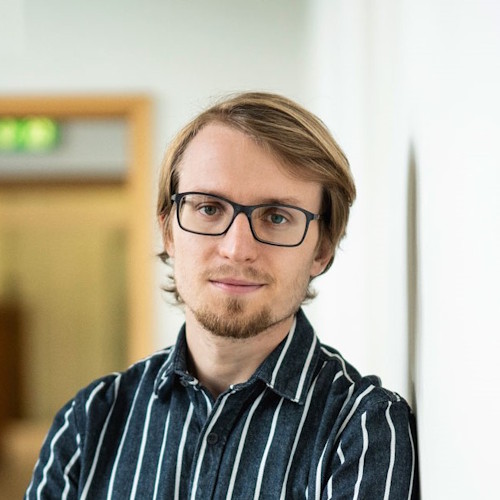
Dr Karl Michael ZiemsUniversity of Southampton, UK 
Dr Karl Michael ZiemsUniversity of Southampton, UK Dr Karl Michael Ziems is a Lecturer at the University of Southampton and Adjunct at the Technical University of Denmark, working at the intersection of quantum chemistry, quantum computing, and quantum dynamics. His research focuses on quantum algorithms for molecular simulation, error mitigation, and quantum software development. He was part of several recent hardware experiments obtaining molecular properties on quantum computers. Previously, he was a postdoctoral researcher in Danish quantum chemistry on quantum computers project (HQC2), did his PhD at the Max Planck School of Photonics in attosecond science, and holds a MSc in theoretical and computational chemistry from the University of Oxford (UK) and MSc/BSc in Chemistry from the Friedrich Schiller University Jena (Germany). |
| 11:30-11:45 |
Discussion
|
| 11:45-12:15 |
Towards materials and chemistry simulation on near-term quantum devices
At Phasecraft, they are developing and implementing methods that will lead to practical application on noisy near-term and early fault-tolerant quantum devices. Performing molecule and material simulations on such devices requires deep understanding of the physics of the problem at hand in combination with efficient representation and encoding of the problem on a device, to not only maximise use of limited resources, but also to provide accurate results ultimately aiming to outperform classical computation on problems of interest. Using examples from some recent consortia based programmes in materials and human health, the talk will introduce some of the considerations of representing and implementing your electronic structure problem on a quantum device. Following which, some of the key ideas in practical workflows and results from hybrid-classical algorithms will be presented. A brief discussion of open challenges and future directions will conclude the presentation. 
Dr Glenn JonesPhasecraft, UK 
Dr Glenn JonesPhasecraft, UK Glenn Jones is a computational chemist with a background in computational chemistry and materials science. He currently works at Phasecraft as Principal Scientist, Head of Chemistry Applications. Prior to joining Phasecraft he spent 15 years in industry at Johnson Matthey Technology Centre where he headed the Physical and Chemical Modelling Team, a group of multi-disciplinary scientists working on multiscale-modelling, from atomic to continuum, for the simulation of industrial chemistry, catalyst and material problems. In 2010, he held a Royal Society Industrial Fellowship jointly between University College London and Johnson Matthey before moving to South Africa in 2013 to establish a computational modelling research lab. He spent the early part of his career at the Technical University of Denmark and University of Cambridge using electronic structure methods for surface science and catalysis problems. He is now bringing his expertise of applied simulation and industry to help guide developments towards useful quantum computing on near-term devices. |
| 12:15-12:30 |
Discussion
|
Chair
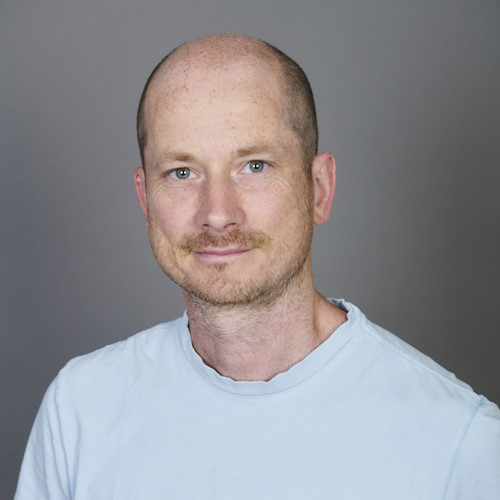
Dr John Buckeridge
London South Bank University, UK

Dr John Buckeridge
London South Bank University, UK
John Buckeridge is a computational materials physicist interested in modelling the properties of semiconductors and other functional materials and is currently a Senior Lecturer at the School of Engineering in London South Bank University (LSBU). He is interested in the interaction of charge carriers with defects in crystalline systems, and aims to understand this interaction at a fundamental level using a variety of state-of-the-art computational techniques. His work focuses on materials used in energy applications and high power microelectronics. He is from Cork, Ireland, which is where he studied physics (at University College Cork). After obtaining his PhD, in 2011 he moved to the Chemistry Department in UCL and subsequently moved to LSBU in 2019.
| 13:30-14:00 |
A framework for spin-adapted quantum chemistry on quantum computers
Quantum computers promise to transform molecular simulation, but many existing algorithms overlook the powerful role of spin symmetry in chemistry. The Quantum Paldus Transform provides a new framework that makes spin adaptation a built-in feature of quantum computation. At its core, the transform connects two representations of electronic states: the conventional occupation-number basis used in quantum chemistry, and a symmetry-adapted basis that organises states by total spin, particle number, and orbital symmetries. This shift, grounded in mathematical structure known as Paldus duality, allows quantum devices to work directly with spin-pure states - the natural language of chemistry. The benefits are considerable. Spin-free Hamiltonians reduce to block-diagonal, sparser forms, enabling more efficient simulations. The transform itself admits polynomial-cost implementations and even highly compact circuit constructions. Beyond simulation, the framework facilitates efficient preparation of Configuration State Functions (CSFs) and naturally embeds quantum information in decoherence-free subsystems, offering potential protection against certain noise channels. By extending the quantum Schur transform into the fermionic setting, the Quantum Paldus Transform establishes a principled and practical route for exploiting spin symmetry in quantum algorithms. This framework opens new directions for scalable, accurate, and symmetry-aware quantum chemistry algorithms on quantum computers. 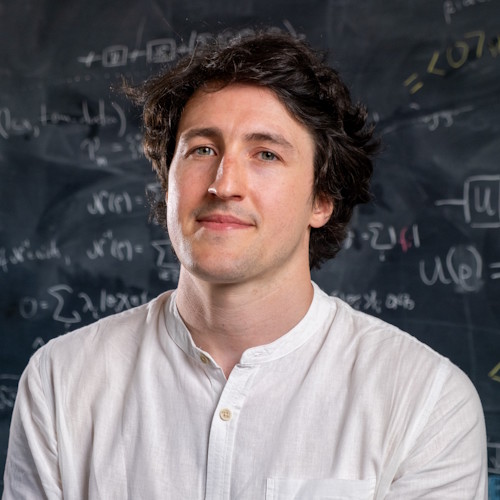
Dr Nathan FitzpatrickQuantinuum, UK 
Dr Nathan FitzpatrickQuantinuum, UK Nathan Fitzpatrick is Lead Research Manager at Quantinuum, where he has worked for the past seven years (formerly Cambridge Quantum Computing). He leads a research group focused on leveraging symmetries to enhance quantum simulation and algorithms, with particular applications in quantum chemistry. His interests include compiling these algorithms down to the circuit level, and he heads the development of algorithmic extensions for the guppy software package. Nathan earned his PhD at Imperial College London under the supervision of Professor Mike Robb FRS and Professor Mike Bearpark, where his research explored the theoretical foundations of configuration interaction under global SU(2) symmetry. |
|---|---|
| 14:00-14:15 |
Discussion
|
| 14:15-14:45 |
Sample-based quantum diagonalisation via randomize Hamiltonian simulations
Quantum computing has emerged as a transformative paradigm with the potential to address problems that remain intractable for classical computers due to their unfavourable scaling. Recent progress in quantum technologies indicates that meaningful advances can already be achieved on near-term noisy devices, provided that algorithms and workflows are carefully tailored to their capabilities and limitations. In this context, noise-resilient quantum algorithms, error-mitigation strategies, and hybrid quantum-classical schemes have been developed, each exploiting the complementary strengths of classical and quantum platforms. This interplay is proving essential to make quantum approaches practically viable in the near term. Among the most promising domains of application are quantum chemistry and materials science, where strongly correlated systems often lie beyond the reach of density functional theory or conventional wavefunction-based methods. Quantum algorithms offer a new pathway to explore these regimes, with the potential to transform our understanding of chemical reactivity, electronic correlations, and the microscopic mechanisms underlying exotic phases of matter. In this talk, I will present recent advances in hybrid-quantum algorithms for electronic-structure calculations, with a focus on sample-based quantum diagonalization methods and demonstrate their application on near-term quantum processors operating at utility scale. 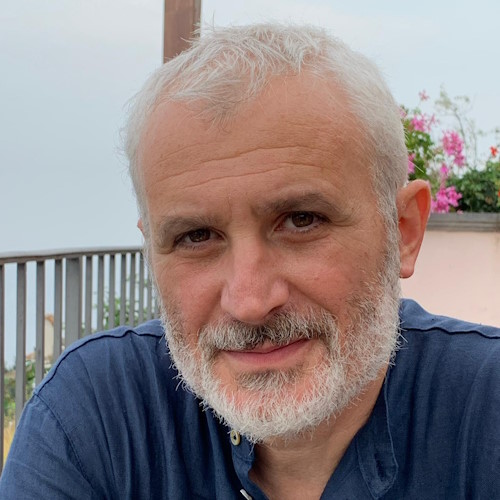
Dr Ivano TavernelliIBM Research, Switzerland 
Dr Ivano TavernelliIBM Research, Switzerland Ivano Tavernelli is a Senior Research Staff Member in Quantum Quantum at IBM Research – Zurich. In 2018 he became IBM Global leader for Advanced Algorithms Quantum Simulations, responsible for quantum simulations and applications in physics, chemistry, biology and materials science. His focus is the design of efficient and scalable quantum algorithms for near-term and fault-tolerant quantum computers. Prior to IBM, he first undertook a Post-Doctoral fellowship at the Cambridge University (UK) and then served as a Maître of Teaching and Research at the Swiss Federal institute of Technology of Lausanne (EPFL). He holds two master degrees, in Biochemistry and Theoretical Physics from ETH Zurich, and a doctorate in theoretical bio-physics also from ETH Zurich. |
| 14:45-15:00 |
Discussion
|
| 15:00-15:30 |
Break
|
| 15:30-16:00 |
From noisy measurements to physical spectra - extension, continuation, and projection techniques for response functions
Response functions of quantum systems, such as electron Green's functions, magnetic, or charge susceptibilities, describe the response of a system to an external perturbation. They are the central objects of interest in quantum computing applications for molecules and materials. Response functions are intrinsically causal. In equilibrium and in steady-state systems, they correspond to a positive spectral function in the frequency domain. Since response functions define an inner product on a Hilbert space and thereby induce a positive definite function, the properties of this function can be used to reduce noise in measured data and to construct positive definite extensions for data known on finite time intervals, which are then guaranteed to correspond to positive spectra. 
Professor Emanuel GullUniversity of Michigan, USA 
Professor Emanuel GullUniversity of Michigan, USA Professor Gull works in the area of condense matter theory with a focus on the study of correlated electronic systems in and out of equilibrium. He is an expert on finite-temperature field theory methods and one of the developers of numerous numerical algorithms, including quantum impurity solvers and analytic continuation methods. Recent research also includes work on quantum computers and machine learning algorithms for quantum field theories. |
| 16:00-16:15 |
Discussion
|
| 16:15-17:00 |
Panel discussion and overview of future directions

Sir Richard Catlow FRSUniversity College London, UK 
Sir Richard Catlow FRSUniversity College London, UK Richard began his career at Oxford University and has directed the Davy-Faraday Laboratory at the Royal Institute in London. He has been a Professor at University College London, University of Keele, the University of Cardiff, and is a Fellow of the Royal Society - the UK Academy of Science - and a member of the German National Science Academy, the Leopoldina, of the Academia Europaea and the World Academy of Sciences (TWAS); he is also an Honorary Fellow of the Royal Academy of Chemistry and of the Materials and Chemical Societies of India. He served as Foreign Secretary of the Royal Society from 2016 – 2021 and was knighted in 2000 for his services to leadership in science and research. His research programme is based on the development and application of computational techniques used in direct conjunction with experiment in probing the properties of complex materials. He has played a leading role in developing the field both in the UK and internationally. His programme comprises the study of energy materials, catalysis, nano-chemistry and surface chemistry. His work has also exploited the synergy between computation and experiment using synchroton radiation and neutron scattering methods, especially in catalytic science. He has published over 1,200 research papers. 
Dr John BuckeridgeLondon South Bank University, UK 
Dr John BuckeridgeLondon South Bank University, UK John Buckeridge is a computational materials physicist interested in modelling the properties of semiconductors and other functional materials and is currently a Senior Lecturer at the School of Engineering in London South Bank University (LSBU). He is interested in the interaction of charge carriers with defects in crystalline systems, and aims to understand this interaction at a fundamental level using a variety of state-of-the-art computational techniques. His work focuses on materials used in energy applications and high power microelectronics. He is from Cork, Ireland, which is where he studied physics (at University College Cork). After obtaining his PhD, in 2011 he moved to the Chemistry Department in UCL and subsequently moved to LSBU in 2019. 
Sir Peter Knight FRSImperial College London & National Physical Laboratory, UK 
Sir Peter Knight FRSImperial College London & National Physical Laboratory, UK Knight is Chair of the UK National Quantum Technology Programme Strategy Advisory Board and has been involved in the creation of the UK Quantum programme since its inception, including the creation of the UK Quantum Strategy and the commitment of £2.5bn over the next decade to the field. He chairs the Quantum Metrology Institute at the National Physical Laboratory and in Senior Research Investigator at Imperial College where until 2010ne was Deputy Rector (Research). He was knighted in 2005 for his work in optical physics. Knight was the 2004 President of the Optical Society of America and 2011-2013 President of the Institute of Physics. He was until 2010 chair of the UK Defence Scientific Advisory Council and remains a UK Government science advisor. His research centres on quantum optics, nonclassical light and quantum technology. He has won the Thomas Young Medal and the Glazebrook Medal of the Institute of Physics, the Ives Medal and the Walther Medal and Prize of the OSA, the Royal Medal of the Royal Society and the Faraday Prize of the IET. He chairs the Steering Group for UNESCO's International Year of Quantum. 
Professor Sarah HarrisUniversity of Sheffield, UK 
Professor Sarah HarrisUniversity of Sheffield, UK Sarah Anne Harris (SAH) is a computational biophysicist and Chair of Biological and Materials Physics in the School of Mathematical and Physical Sciences in Sheffield. Her research uses high performance computer simulations to provide physical insight into biological mechanisms from the atomistic up to the cellular level. She has developed new theoretical physics tool to understand molecular biology at the mesoscale (https://ffea.bitbucket.io/), with a focus on modelling molecular motors such as dynein and myosin. Sarah is a strong advocate for the use of computation in the biological sciences, and is the current Chair of the Collaborative Computational Project in Biomolecular simulation (CCPBioSim) which supports UK researchers using simulations to understand biomolecular interactions and processes. CCPBioSim provides both beginners and experts workshops, and meetings identifying new cutting edge topics (https://www.ccpbiosim.ac.uk/). 
Dr Lucia ReiningFrench National Centre for Scientific Research (CNRS), France 
Dr Lucia ReiningFrench National Centre for Scientific Research (CNRS), France Lucia Reining is CNRS senior scientist at École Polytechnique, France. She studies condensed matter theory to understand and predict the response of matter excited by radiation such as light. This response is often dominated by “N-body” effects, implying that the response of all electrons is not the sum of individual responses. She has been one of the pioneers in including the electron-hole interaction in optical spectra calculations, going beyond existing semi-empirical approaches. In an ongoing dialogue between theory and experiment, she has proposed innovative, unified approaches to the N-body problem, while transforming these abstract formalisms into concrete tools for calculating the properties of everyday materials. Of German origin, she obtained her PhD in Rome, before moving to the Centre Européen de Calcul Atomique et Moléculaire in the Paris region and then joining the CNRS. She is a founding member of the European Theoretical Spectroscopy Facility. She promotes an open, international and collaborative environment and diversity in research. 
Dr Nicole HolzmannPsiQuantum, Germany 
Dr Nicole HolzmannPsiQuantum, Germany Nicole is a manager in the Quantum Solutions team at PsiQuantum, where she focuses on identifying viable fault-tolerant quantum computing use cases, particularly within the defence sector. In her previous role at Riverlane, she led a team dedicated to evaluating fault-tolerant quantum algorithms, their applications and feasibility. With over 10 years in academia, Nicole has extensive experience in quantum and computational chemistry, having researched topics ranging from electronic properties of small molecules to catalysis mechanisms, membrane proteins, and drug design. |


